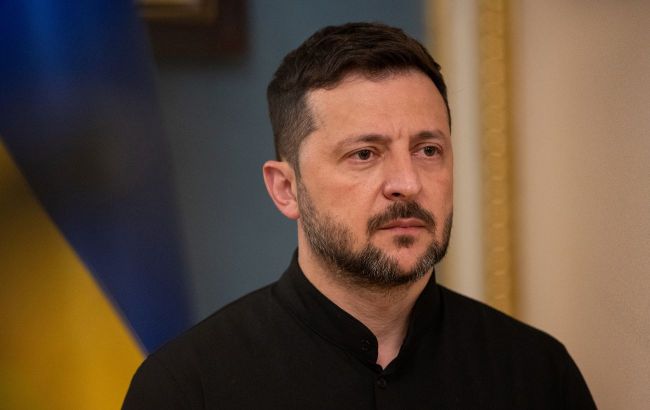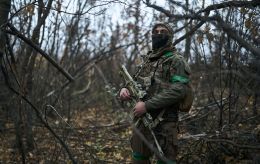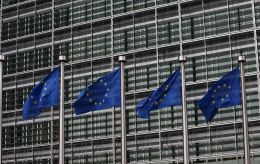Putin flips the bird: Peace talks go nowhere
 Volodymyr Zelenskyy (photo: Getty Images)
Volodymyr Zelenskyy (photo: Getty Images)
This week saw many developments and statements in the negotiations over the Russia–Ukraine war — but very few results.
RBC-Ukraine reports on what was agreed during the second meeting in Istanbul, what Trump and Putin discussed once again, and what lies ahead on the negotiation agenda.
Key questions:
-
The second meeting in Istanbul: what did Ukraine and Russia take away?
-
How did Trump respond to the talks, and has he changed his tone on Putin?
-
How is the US preparing new sanctions against Russia, and what are the chances Trump will approve them?
Deadlock in Istanbul
One of the key events of the week was the second round of talks between Ukraine and Russia in Istanbul. Turkey acted as the mediator. However, the United States did not take part in this round. As noted by Ukrainian Foreign Ministry spokesperson Heorhii Tykhyi, Russia insisted on the absence of the US.
Ahead of the negotiations with Russia, members of the Ukrainian delegation met with representatives of Germany, Italy, and the United Kingdom. During the meeting, the parties coordinated their positions and discussed the agenda: a leaders’ summit, a full ceasefire, and confidence-building measures in the humanitarian sphere.
However, Russia continues to show no real willingness to end the war. The talks lasted just over an hour in total — notably short for meetings of this kind.
Russia handed Ukraine its draft memorandum on a ceasefire. It includes demands that are fundamentally unacceptable to Ukraine. The memorandum consists of three sections, contains 31 provisions, and outlines two potential "scenarios" for ending hostilities.
The first ceasefire "scenario" proposed by the aggressors calls for the complete withdrawal of Ukraine’s Armed Forces from Russian territory as well as from Donetsk, Luhansk, Kherson, and Zaporizhzhia regions within 30 days of the start of the truce. The second scenario calls for a ban on troop movements, a ban on mobilization in Ukraine, demobilization, and the lifting of martial law. It also includes a halt to military support for Ukraine from allied countries and a ban on the presence of foreign troops on Ukrainian territory.
President of Ukraine Volodymyr Zelenskyy called the Russian document "political spam" and "bloody PR." He also stated that Putin feels untouchable, and with each new delay in diplomacy, Russia is "showing the middle finger to the entire world."
Ukraine submitted its own version of the memorandum. Its position remains unchanged: the precondition for any negotiations must be a "full and unconditional ceasefire on land, at sea, and in the air." The document also outlines confidence-building measures: the return of deported Ukrainian children, an exchange of prisoners of war, and the release of all civilian hostages held by Russia. Moscow is expected to review the document over the course of a week, meaning a response should come early next week.
In addition, Russia proposed the idea of a two- to three-day ceasefire, but not across the entire frontline — only so that commanders could retrieve the bodies of their dead soldiers. President Zelenskyy strongly criticized this idea. He noted that Ukraine’s agenda has not changed: an unconditional ceasefire, exchange of prisoners, return of the children, release of civilians, followed by a summit of leaders.
"They don’t actually see a ceasefire as such. They said they were ready for a 2–3 day truce to remove their dead from the battlefield. I think they’re idiots. Because a ceasefire is meant to prevent people from being killed," Zelenskyy said. According to him, Russia’s proposal of a 2–3 day ceasefire is nothing more than rhetorical posturing.
According to the head of Ukraine’s delegation, Defense Minister Rustem Umerov, the situation currently suggests that the Russians are once again stalling for time, trying to create a "diplomatic image" for the US without taking any real steps.
Trump–Putin call and Russia’s escalation
In Istanbul, the Ukrainian delegation proposed a meeting between President Volodymyr Zelenskyy and President Vladimir Putin to be held at the end of the month, between June 20 and 30. According to Rustem Umerov, all key issues between Ukraine and Russia can only be resolved at the level of heads of state. The Ukrainian proposal suggests that US President Donald Trump could also take part in the summit.
There is also a possibility that Turkish President Recep Tayyip Erdoğan may join the talks. Notably, Ankara has started to play a more active role as a mediator. In particular, ahead of the negotiations, Turkish Foreign Minister Hakan Fidan visited both Moscow and Kyiv as part of a "shuttle diplomacy" effort.
White House Press Secretary Karoline Leavitt stated that Trump is open to a potential meeting with both Volodymyr Zelenskyy and Vladimir Putin, "but he wants both leaders and both sides to come to the negotiating table together."
President Trump himself has not publicly commented on the outcome of the Istanbul talks. However, unnamed US officials told ABC News that the demands in Russia’s "memorandum" came as no surprise, though they caused disappointment. According to the officials, both Ukraine and the Trump administration consider several points in the "memorandum" unacceptable. They believe these demands are part of Moscow’s attempt to delay constructive negotiations.
Meanwhile, on June 4, Putin refused to attend the summit. Moreover, he claimed that Ukraine was allegedly suffering major losses on the battlefield and that the "Kyiv leadership has resorted to organizing terrorist acts." Putin referred to incidents involving bridges on Russian territory but made no mention of Ukraine’s "Spiderweb" operation, during which Russian strategic bombers were destroyed on June 1.
On the same day, a phone call took place between Trump and Putin. During the conversation, the Russian dictator complained about Ukrainian strikes on aircraft. "It was a good conversation, but not a conversation that will lead to immediate peace. President Putin did say, and very strongly, that he will have to respond to the recent attack on the airfields," Trump wrote afterward.
Russia’s large-scale attack on Ukraine during the night of June 5–6 once again confirmed its intentions. During the strike, Russia launched 452 drones and missiles. Ukraine’s air defense intercepted 406 of them — a new record since the start of the full-scale invasion. Russia’s Ministry of Defense called the attack "a response to terrorist acts."
Prospects for new sanctions against Russia
In parallel, discussions continue around new US sanctions against Russia. As a reminder, while Trump continues to refuse to implement them, Senators Lindsey Graham and Richard Blumenthal have jointly developed a bill in the upper house of Congress that would impose a 500% tariff on any country purchasing energy resources from Russia. This week, the senators traveled to Europe to coordinate the provisions of the bill and stated that they hoped to have it adopted before the G7 summit, which will take place in Canada from June 15 to 17.
The bill, initiated by Graham and Blumenthal, is supported by more than 80 Senate co-sponsors. Notably, Speaker of the House of Representatives Mike Johnson also backed tougher sanctions. "There’s many members of Congress that want us to sanction Russia as strongly as we can. And I’m an advocate of that," Johnson said.
Due to procedural rules, Johnson has the authority to block legislation simply by not putting it to a vote. At the same time, he had previously aligned himself with Trump’s position on Ukraine, so his recent statement may signal a shift on the sanctions issue. However, the final decision rests with Trump, and there is no indication that his stance has changed.
In addition, a Ukrainian delegation visited Washington, led by First Deputy Prime Minister Yuliia Svyrydenko and Head of the Presidential Office Andriy Yermak. The Ukrainian officials held a series of meetings with their American counterparts to discuss security issues, as well as the implementation of a mineral resources agreement. A special investment fund is expected to launch by the end of the year.
Preparations for new prisoner exchanges, but without children
As during the previous round of talks in Istanbul, the only practical outcome has been agreements on new prisoner exchanges. Ukraine and Russia have agreed to a swap of all severely wounded and critically ill prisoners of war, as well as all military personnel aged 18 to 25. A "1,000 for 1,000" exchange is planned, along with an additional "200 for 200." There are also plans to exchange the bodies of fallen soldiers—6,000 from each side.
"In the release of prisoners of war, we agreed to focus on categories rather than numbers," said the head of the Ukrainian delegation, Defense Minister Rustem Umerov.
However, Ukraine’s demand for the return of children abducted by Russia has gone unanswered. Russian delegation member Vladimir Medinsky claimed that Russia was allegedly unable to provide documentary confirmation of Ukraine’s abduction claims. Moreover, according to him, Moscow did not abduct children but rather "rescued them in Ukraine."
***
Overall, current negotiation trends show a decline in Donald Trump’s interest in the Russia-Ukraine war. This may ultimately lead to a US withdrawal from the process — a possibility Trump himself has voiced multiple times. Although many in Washington oppose such a move, for now, this scenario appears the most realistic.
Still, the US’s potential withdrawal could unfold in different ways. The key question is whether, under such a scenario, the US would continue to supply Ukraine with weapons and intelligence. Sources at RBC-Ukraine in Ukrainian and European diplomatic and political circles hold differing views. Some even take a fairly optimistic outlook, hoping that a US sanctions package will still be adopted in the foreseeable future.

